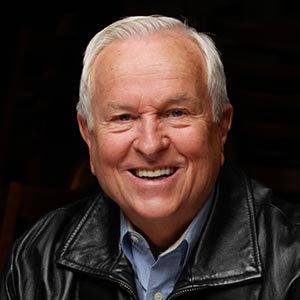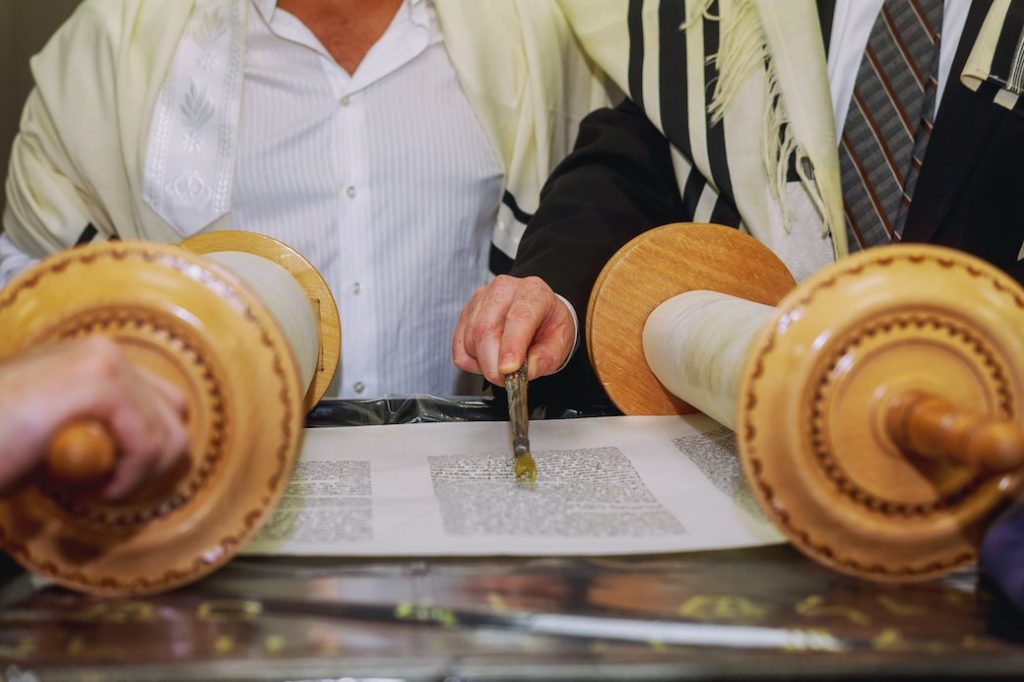Welcome to the first post in this “Journey Together” series.
Each week we’ll look at our Christian beliefs, and whether they help us to answer these four important questions: “Why am I here?,” “What is truth?,” “Why should I believe this truth?,” and “How does this truth affect my every day life?” Can we, by daily applying God’s standards to our lives, really live the best version of life God wants for us? Let’s Journey Together to find out!
To get us started, below I share why I’m so excited about an ancient text, the Lodz Torah, which I had the amazing honor of acquiring. I named it in memory of the Jews who suffered and died at the hands of the Nazis during WW II.
The rare scroll showcases the strict standards historical scribes followed to ensure they faithfully copied older biblical texts. What these strict standards mean, of course, is that we can trust the validity of the Scriptures! We can open up the Bible and pretty confidently say, ‘Thus saith the Lord.”
“Baruch, it is certified!” Moshe exclaimed, as he burst through the door of his friend’s home. “I could not wait to tell you.”
Baruch immediately grasped Moshe’s elation, feeling it flood his own heart. Moshe was bringing the news he had been hoping to hear for many weeks now: that the rabbi had certified the Torah (the first five books of the Old Testament) that had taken Baruch a year to painstakingly copy onto a new scroll.
Meticulous Scribes, Trusted Manuscripts
It’s easy for me to visualize the above scene, because I, too, now 550+ years later, am overwhelmed as I touch the edge of this ancient text prepared by a dedicated Ashkenazi scribe.
The scribe undoubtably followed the strict requirement of preparing the skins and ink, as well as the traditions of precisely copying the Scripture. He certainly was rigorously trained, and highly skilled, a respected religious scholar in his community. To be certified as a scribe, this professional scribe had to memorize 4,000 different laws and principles dictating how to copy Scripture. Wow!
His work was eye-straining and back-breaking, as he worked hours on end hunched over a table, slowly and meticulously copying Scripture in a room dimly lit by candles or an oil lamp. Let’s follow his process.
Exacting Process
To begin, the scribe obtained ceremonially clean animal skins from a Jewish butcher, and created the panels for the scroll. Next, he carefully soaked the animal skins in water mixed with his barley leaves. For this particular scroll, he soaked five skins. The soaking softened the skins, making it easier for him to scrape off the hair and fibers.
Then came the critical task of ensuring that he copied every letter clearly and straight. Using threads as guides, the scribe took a dull knife that would not cut through the skin and carefully scored the surface horizontally. This indented the skin slightly to form a distinguishable line. He repeated the same process vertically, creating a perfect cross-pattern grid on which to copy each and every letter of God’s written Word.
The scribe believed, like all the Jewish scribes before him, that he had a solemn responsibility to reproduce every letter perfectly and clearly. Writing his letters on the grid aided him in accomplishing this goal. He knew that miscopying what God said could mean misreading, mispronouncing, and worse, misinterpreting and misunderstanding what God wants his people to know about him and his ways.
In following typical Jewish tradition, this scribe would have dipped his new quill in the freshly prepared ink and uttered each word aloud before he wrote it. “In the beginning…” he would have recited, as he painstakingly formed the letters. But he would have stopped before completing the last letter of the word just before the word “God.” Because, according to tradition, he would need to put down his quill and ceremoniously wash his hands. It was critical to purify himself and sanctify the ink that would pen the name of God.
With 304,805 letters to write — and not a single one allowed to touch another — the scribe’s task was daunting. His meticulous care and deliberation is why it took him over a year to complete this very old Torah.
When finally finished, the scribe’s manuscript had to be certified as having been transcribed correctly. Some traditions required three separate rabbis to check the accuracy! This meant these persons had to completely unroll this 72-foot scroll to check and count every single word and all 304,805 of the letters. They had to be sure there was the same number of letters in this scroll compared to the Torah from which it was copied.
Not only that, when they counted the words, they knew the center word was found in Leviticus 13:33. If the center word of the new scroll did not fall exactly within verse 33, it could not be certified. They did the same thing for every letter. The center letter was found in Leviticus 11:45. If the center letter in the new scroll was in verse 45, they could be confident they had an exact replica of the previous Torah.
Proving Reliable
It is overwhelming to realize that God has superintended the writing and passing down of his words from generation to generation so that you and I can have an accurate revelation of him! He has gone to extraordinary lengths to restore the intimate relationship with us that he once had with Adam and Eve in Eden. And he has chosen the Bible as the means to reach out in human language, reveal the essence of his relational heart, and share the Good News of Christ as our salvation.
In Deuteronomy 10:20, Moses instructed the children of Israel “to fear the Lord your God and worship him.” To fear meant to be in awe of God, to revere him and worship him as the Almighty God who shows mercy and grace to his people. That awesome reverence is clearly evident as each scribe performed his solemn duty to pass down the Scripture from one generation to another with such accuracy and exactness.
Now I hope you can understand why I felt such strong emotion when I held this centuries-old medieval copy of ancient Scripture in my arms!It is a tangible embodiment of the scribe’s dedication, skill, and painstaking labor, and the work of all such committed scribes to ensure the preservation of God’s message of love to us!
Stay with us as we continue this blog series. Let’s journey together!
The full version of this article by Josh McDowell can be found here. To visit the introduction page of this series, click here. Click here to read next week’s blog.




